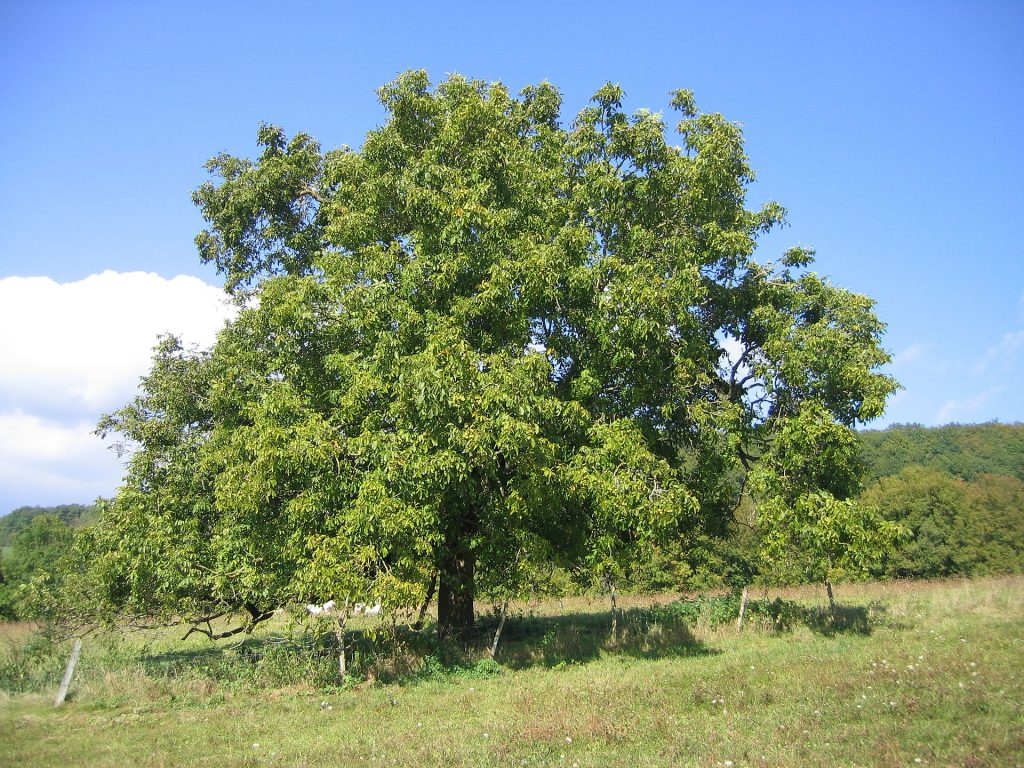
Also called English walnut, this deciduous tree belongs to the Juglandaceae plant family that also includes pecan and hickory. It probably originated in Iran but was spread in pre-historic times to the area from southeastern Europe to China. The ancient Roman naturalist, Pliny the Elder (died 79 AD), claims that the Greeks received the tree from Persia and notes that walnuts were used as a breath freshener, for dying wool, and as a protection against poisons. The Greek pharmacologist and physician, Dioscorides, who traveled with the emperor Nero, extolled the virtues of walnut for use in the treatment of a variety of ills including inflammation of the breasts, abscesses, dislocations, human and dog bites, colic, bruises, gangrene, carbuncles, stye in the eye, and hair loss. The remains of carbonized walnuts were found in the ashes of the Pompeii area, and several wall painting show them. Photo Credit Wikipedia

Although the tree has been valued for its medicinal qualities for centuries, it is also a beautiful ornamental and valued for its edible nuts. It grows up to 120′ tall (usually under 60′) and has broad crown and a short trunk. The bark is smooth and olive-brown when young but turns silvery-grey and develops scattered broad fissures with maturity. The alternate leaves are are 10-16″ long and are pinnately divided into 5-11 oblong leaflets that are 4-7″ long. Clusters of yellowish green male and female flowers appear in the late spring on the same tree. The male flowers are in drooping catkins 2-4″ long while the female flowers are in terminal clusters of 2-5. The fruit ripens in the autumn and consists of a semi-fleshy green husk and a rough-surfaced brown nut containing a large edible seed. Photo Credit Stanley Jashemski